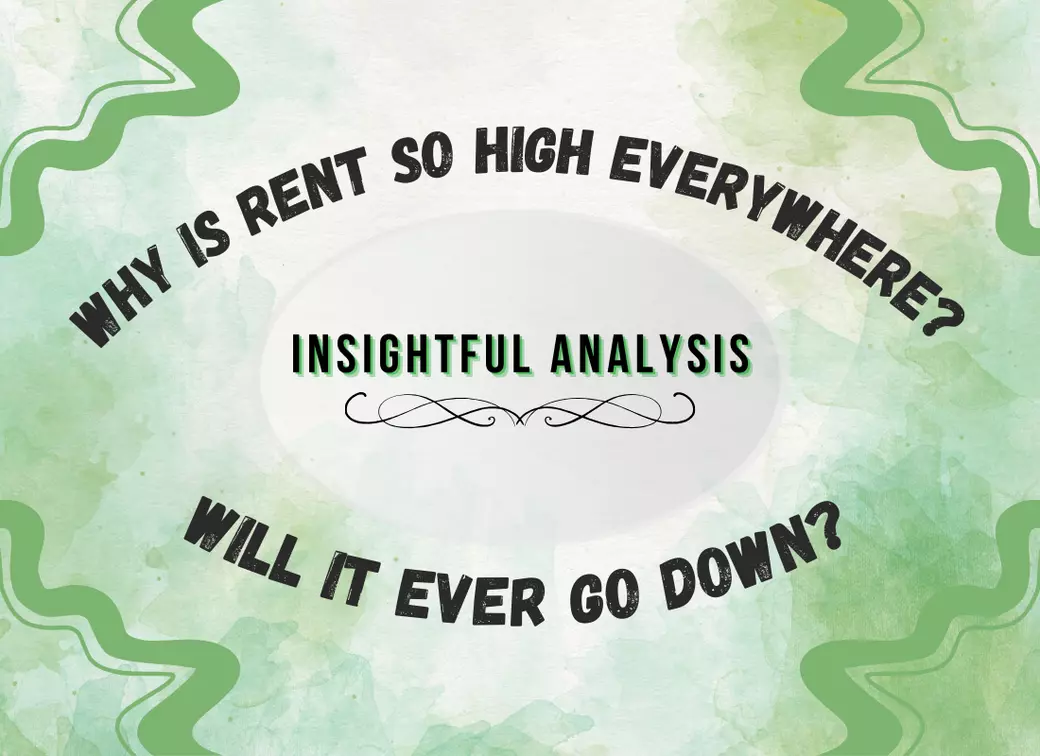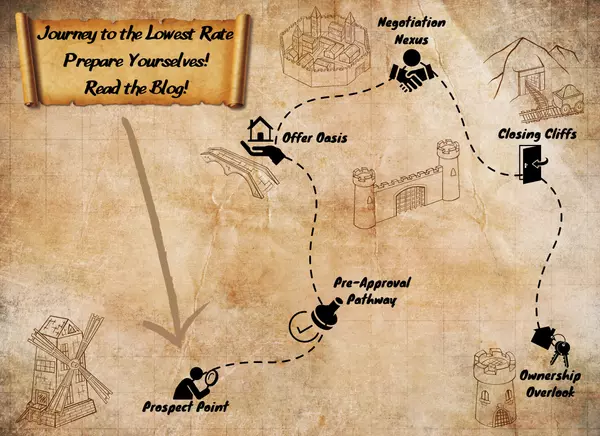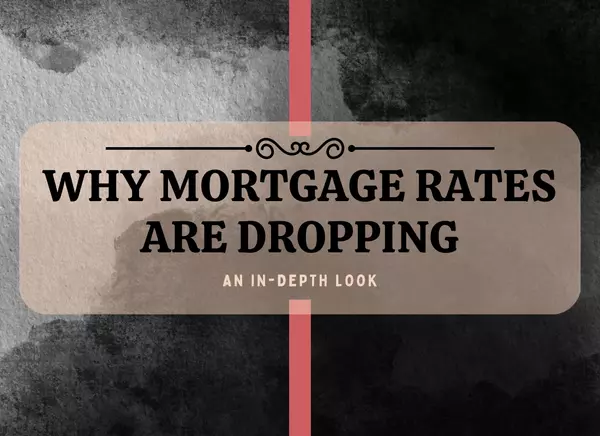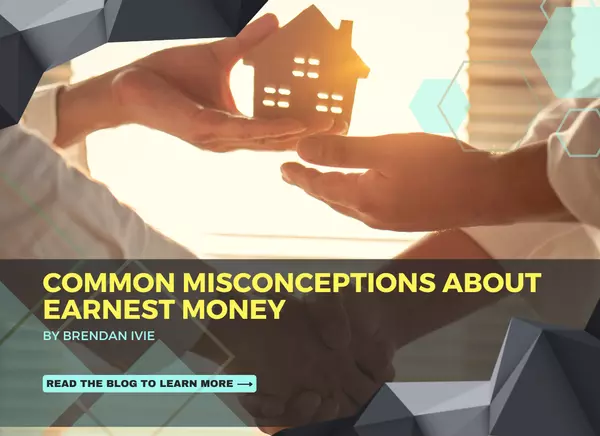Why is Rent So High Everywhere and Will It Ever Go Down? | Insightful Analysis

If you've recently searched for a new apartment or rental home in the united states, you've probably been shocked by the high prices. It seems like everywhere you look, rents are soaring. So, why is rent so high, and will it ever go down? Let's dive into the factors driving up rental prices and explore whether there's hope for more affordable rents in the future.
Understanding the High Rent Phenomenon
Economic Factors
One major reason for rising rent costs, is the overall state of the economy. According to a recent Bloomberg article, rent inflation remains a significant concern, even as discussions about potential interest rate cuts loom. When the economy is strong, people generally have more money to spend, which will have an overall affect on rental market trends.
Supply and Demand
The basic principle of supply and demand plays a crucial role in rental prices. Simply put, there are more people looking for rentals than there are properties available. This imbalance drives up prices as landlords and property managers know they can charge more for their monthly payments, and still find tenants.
Rising Renter Incomes
Interestingly, incomes for renters have been rising, which has also contributed to higher rents. A report from Redfin highlights that renter incomes have increased, which means that many people can afford to pay more for housing. While this might seem like a good thing, it also means that landlords can justify higher rental rates and security deposits.
Will Rent Prices Ever Go Down?
Economic Shifts
For rents to decrease, we would likely need to see significant economic shifts. If the economy were to slow down or enter a recession, people might have less disposable income, leading to a decrease in demand for high-priced rentals. This could potentially drive rents down.
Increased Housing Supply
Another way to bring down rents is to increase the supply of rental properties. This can be achieved through new construction or converting existing buildings into rental units. However, this process takes time and is often met with various regulatory and logistical challenges.
Interest Rates and Housing Market Dynamics
The relationship between interest rates and rent prices is also worth noting. According to Bloomberg, if interest rates were to be cut, it might lead to more people buying homes instead of renting. This could reduce demand for rentals and, in turn, help lower rents. However, the impact of interest rate cuts on rent prices is not straightforward and depends on various factors, including overall economic conditions and housing market dynamics.
The Current State of the Rental Market

Record-High Asking Rents
Redfin reports that asking rents are at their highest levels since 2022. This trend reflects the persistent demand for rental housing and the challenges in increasing the supply. High asking rents are a clear indicator of the competitive nature of the rental market.
Renter Incomes and Affordability
Another Redfin report also gives us an important insight into the current state of the rental market. They report that to afford the average U.S. apartment, a renter needs to make about $66,120 per year.
However, the typical renter earns only about $54,712 annually. So despite rising incomes, rent prices have far surpassed what the average US citizen can afford. And for those who want to know exactly how far the gap between the average apartment rent and the average renters' salary has grown, it is a difference of $11,408!!
This gap between necessary income and actual income highlights the affordability crisis many renters face. Even with rising incomes, many people are still struggling to keep up with the high cost of renting.
What Do I Think of This?
I believe that despite the fact that incomes are increasing, many renters still struggle with affordability. This is particularly true in major metropolitan areas, where the cost of living is often much higher. The gap between what people earn and what they need to spend on rent can be substantial, making it difficult for individuals and families to find housing that is within their budget.
This issue is not new, and it continues to be a major concern for many people. The lack of affordable housing options has led to a growing number of individuals and families facing housing insecurity and homelessness. To address this problem, there is a clear need for more affordable housing solutions to be developed.
Efforts to increase the availability of affordable housing can help to alleviate the financial burden on renters and provide them with more stability and security. This can have a positive impact on individuals and families, allowing them to focus on other aspects of their lives without the constant worry of being able to afford their rent.
Overall, the issue of affordability in the rental market is a complex and multifaceted problem that requires a comprehensive approach to address. By working together to develop and implement affordable housing solutions, we can help to ensure that everyone has access to safe and affordable housing options.
Future Trends in the Rental Market
Potential for Stabilization
The current outlook for the future of rent prices may appear grim, with many renters struggling to pay rent given the increasing costs. However, there is hope for stabilization in the future. One potential solution is to increase the supply of housing units through new construction projects. By building more affordable housing options, the market could become more competitive, leading to a decrease in rent prices.
Additionally, changes in economic conditions could also play a role in stabilizing rent prices. If the economy improves and more people are able to afford housing, the demand for rental units may decrease, leading to a more balanced market. This could result in landlords and rental property management companies being more willing to negotiate on rent prices or even lower them to attract tenants.
Overall, while the current situation may seem challenging, there are potential solutions that could help stabilize or even reduce rent prices in the future. By addressing the supply and demand imbalance and monitoring economic conditions, there is hope for a more affordable rental market for all.
Policy Interventions
Government policies aimed at increasing affordable housing and regulating rental markets could also play a role in addressing high rents. Policies that incentivize construction of affordable housing units or provide rent control measures could help make rental housing more accessible.
Conclusion: Navigating the Rental Market
In conclusion, the reasons behind high rent prices are multifaceted, involving economic factors, supply and demand dynamics, and rising incomes. While it's challenging to predict exactly when or if rent prices will go down, understanding these factors can help renters navigate the market more effectively.
Keep an eye on economic trends, housing policies, and market conditions to stay informed about potential changes in rent prices. Whether you're a renter looking for a new home or a landlord trying to set fair prices, staying informed is key to making the best decisions in the current rental landscape.
Sources
- Bloomberg: US Rent Inflation Looms Over Potential Interest Rate Cut
- Redfin: Renter Incomes and Affordability 2024
- Redfin: Asking Rents Highest Since 2022
Lets Keep the Conversation Going!
Have you experienced the impact of rising rent prices? Share your stories and tips for navigating the current rental market on my social media pages! And don't forget to sign up on my website to stay updated with the latest Real estate, San Antonio, and Lifestyle blogs.
Categories
Recent Posts












